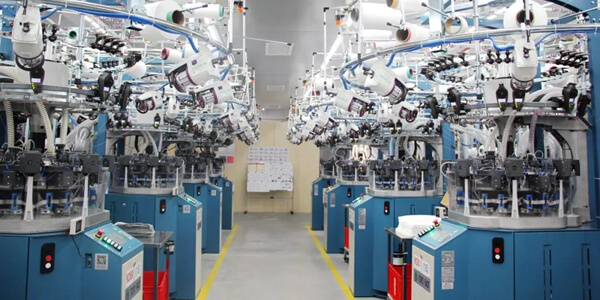
How Seamless Underwear is Made?
Seamless underwear garments are rapidly gaining popularity amongst women for many reasons. Rather than being made through stitching or sewing, seamless clothes are crafted from yarns through knitting, creating a garment with no seams or minimal seams. The knitting machine produces wearable underwear in various styles, such as panties. In this article, we will discuss a visit to a panty manufacturing unit and the process of making seamless panties.
The benefit of the seamless garment
Seamless garment manufacturing has recently gained popularity due to its efficiency and cost savings. By eliminating the need for fabric cutting and reducing the number of stitching operations, seamless garment production significantly reduces wasted resources while providing a faster lead time for underwear item production. This process also offers improved comfort and durability, increased fabric utilization, and reduced labor costs. Overall, seamless garment manufacturing is an efficient and cost-effective way to produce underwear.
The process of making seamless underwear
Making seamless underwear involves several steps, including product designing and knitting pattern making using software, knitting the pantyhose, dyeing them, quality checking after the dyeing process, printing labels, cutting and stitching the fabric to create garments, and finally, shorting and packing.
Each step is essential to ensure that only high-quality products are delivered at the end. Here's a closer look at each stage:
1. Product design and pattern making
Software is used to create designs for seamless underwear with precise measurements for knitted fabric.
2. Knitting
Underwear is then knitted according to patterns designed on software in single or double jersey machines with elastane yarns as customers require.
3. Dyeing
The knitted fabrics are dyed in different colors per customer requirement through various processes like reactive dyeing or pigment printings, depending on their desired outcomes, such as softness or colorfastness of fabrics.
4. Quality Check
After completing the dyeing process, the fabric undergoes a quality check, ensuring that it fulfills all requirements set out by customers before proceeding further into the garment manufacturing stage.
5. Label Printing
Labels are printed according to the customer's requirement with fabric composition details and care instructions.
6. Cutting & Stitching
The fabric is then cut into different pattern pieces as specified in design files using automated cutting machines and stitched together on sewing machines to complete garments.
7. Shorting & Packing
After completion of garments, they are shorted according to sizes and styles, packed in polybags with hangers, and folded for shipment.
The machinery required for manufacturing seamless panties
1.Circular knitting machine
2.Dyeing machine
3.Printing machine
4.Overlocks sewing machine
Seamless panties are most commonly crafted from a blend of nylon and spandex, otherwise known as Lycra. Nylon works to help wick away any moisture on the skin, while the spandex provides stretch, comfort, and flexibility. Seamless panties come in briefs, thongs, bikinis styles, and various fabrics such as cotton and cotton blends. Whether looking for a snug fit or something breathable, seamless underwear is the perfect solution.
